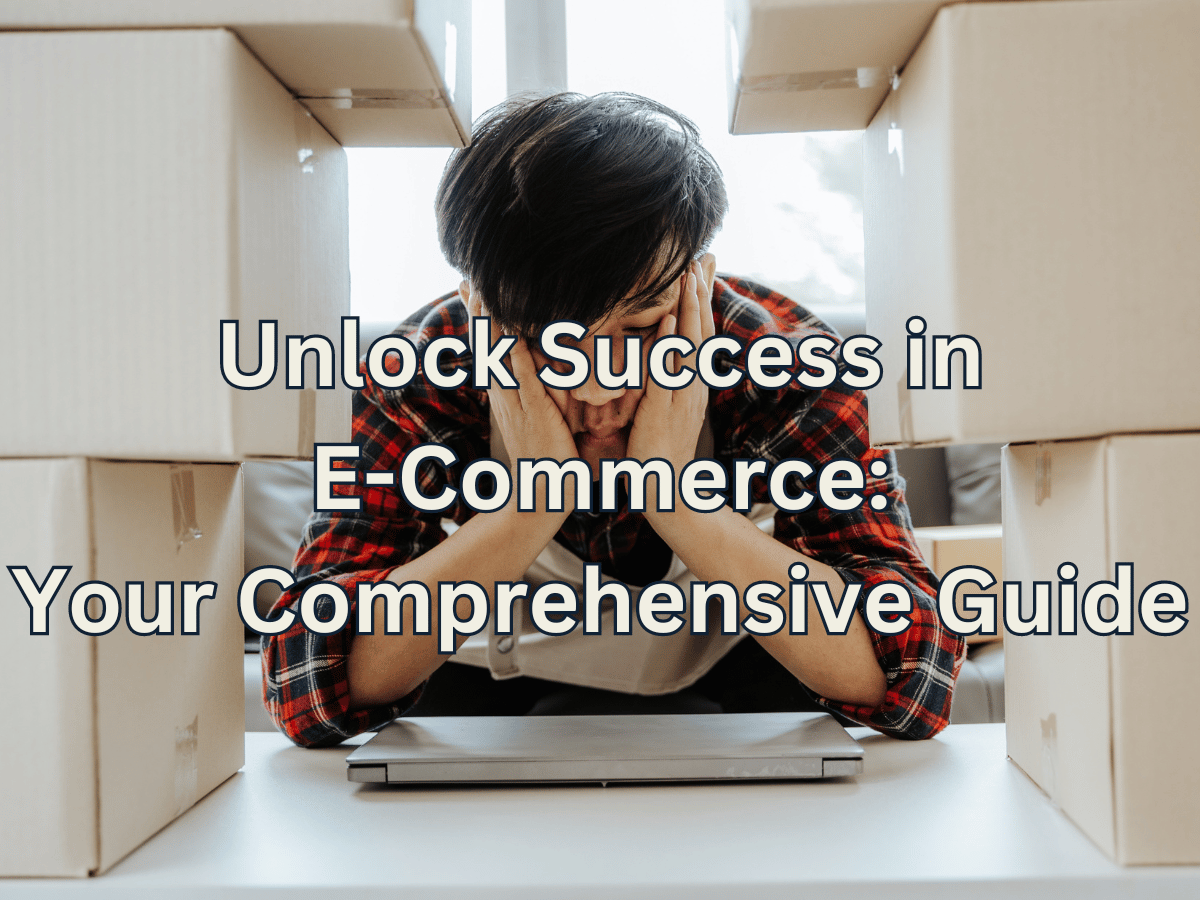Launching A Successful E-Commerce Venture: A Comprehensive Guide to Starting Your Own Online Business

In the dynamic world of commerce, establishing an e-commerce business has become an increasingly popular avenue for aspiring entrepreneurs. The digital landscape offers unprecedented opportunities to reach a global audience, but success relies on strategic planning and execution. In this comprehensive guide, we will walk you through the essential steps to kickstart your e-commerce brand and pave the way for long-term success. And remember: don’t think you have to have everything perfect before you can start. Starting and building any business should always be a work in progress. Focus on setting up the basics you need and build on those are you go.
1. Market Research: Understanding Your Niche
Before diving into the intricacies of building an e-commerce brand, take the time to conduct thorough market research. Identify your target audience, analyze competitors, and assess the demand for your products or services. Leverage tools like Google Trends, keyword research, and industry reports to gather valuable insights. By understanding your niche, you can tailor your business strategy to meet the needs of your potential customers.
2. Choosing the Right E-Commerce Platform
Selecting the appropriate e-commerce platform is a pivotal decision that will impact the functionality and scalability of your business. Options like Shopify, WooCommerce, and BigCommerce offer user-friendly interfaces, customizable templates, and integrated payment solutions. Consider your business requirements, budget constraints, and long-term goals when making this decision. Most platforms provide trial periods, allowing you to explore their features before committing.
3. Create a Unique Brand Identity
In a crowded online marketplace, a distinctive brand identity is crucial for standing out and building customer trust. Develop a memorable logo, choose a cohesive color palette, and craft a compelling brand story. Your website's design should reflect your brand's personality and values. Consistency across all touchpoints, including social media, packaging, and marketing materials, will contribute to a strong and recognizable brand image.
4. Identify and Source Products
Figure out what products you want to offer, and find out where you are going to source them. If you want to offer a type of printed mug (for example), then you could offer the print, and when a customer orders the mug with that print, the order is then received and fulfilled by an outsourced company. This can keep costs low for you, meaning higher revenue. Perhaps you want to invest in having physical inventory. What type of items are you looking to offer, and where do you plan to store them? Taking the time to fully plan out your inventory and sourcing process allows you to figure out what costs and expenses you may incur to ensure you have the inventory you need.
5. Build a User-Friendly Website
Your website is the virtual storefront of your e-commerce business, and it must provide a seamless and enjoyable user experience. Optimize your site for mobile responsiveness, ensuring that users can navigate effortlessly on various devices. Implement clear and intuitive navigation, high-quality product images, and compelling product descriptions. Streamlined checkout processes with multiple payment options will contribute to higher conversion rates.
6. Effective Product Listings and Descriptions
Invest time in creating compelling product listings and descriptions that not only highlight the features but also address the benefits for the customer. Use high-resolution images from multiple angles to showcase your products. Implement SEO best practices by incorporating relevant keywords naturally into your product titles and descriptions. This will improve the visibility of your products on search engines, driving organic traffic to your site.
7. Implement a Robust SEO Strategy
Search engine optimization (SEO) is a cornerstone of online visibility. Conduct keyword research to identify terms relevant to your products and integrate them strategically into your website content. Create informative blog posts, product guides, and other valuable content to engage your audience and establish your brand as an authority in your niche. Regularly update your website to ensure that it aligns with the latest SEO algorithms.
8. Utilize Social Media Marketing
Social media platforms are powerful tools for connecting with your target audience and driving traffic to your e-commerce site. Establish a strong presence on platforms such as Facebook, Instagram, Twitter, and Pinterest, depending on your target demographic. Craft engaging content, run targeted ads, and leverage influencer partnerships to expand your reach and build a community around your brand.
9. Email Marketing for Customer Retention
Building and maintaining a loyal customer base is essential for the long-term success of your e-commerce business. Implement an email marketing strategy to nurture relationships with your customers. Offer personalized promotions, exclusive discounts, and informative content. Use email campaigns to recover abandoned carts, gather feedback, and keep your audience informed about new product launches and updates.
10. Secure and Streamlined Payment Solutions
A secure and efficient payment system is crucial for building trust with your customers. Integrate reliable and widely used payment gateways to provide a seamless checkout experience. Clearly communicate your security measures to assure customers that their sensitive information is protected. Regularly update your payment systems to stay compliant with industry standards and offer the latest features.
11. Implementing Analytics for Informed Decision-Making
Analytics tools are invaluable for understanding customer behavior, tracking sales performance, and making data-driven decisions. Google Analytics, for instance, provides insights into website traffic, user demographics, and conversion rates. Regularly analyze these metrics to identify areas for improvement, understand customer preferences, and optimize your e-commerce strategy accordingly.

The Cost of Starting Up an E-commerce Brand
- Website - look into domain hosting websites where you can have your domain be hosted. Some website builder platforms allow you to transfer your domain so it can be hosted directly on the website builder.
- Payment Processing - identify what type of payment processing software you need to accept payments.
- Inventory - invest in any inventory (physical/digital/etc.) you may need for your business. That way, you have it readily available.
- Shipping & Fulfillment - figure out how you want to set up your shipping and order fulfillment. Do you want to be the one to ship out orders? Will you have someone else do your order fulfillment?
- Warehouse & Storage - if you need to invest in inventory, then where will you house it? Will you need to invest in some kind of warehouse or storage space?
- Operations - decide what kinds of business expenses you will have. This includes things like software, hardware, space, and other items.
While you may not have a high start-up cost for starting an e-commerce brand (depending on what you are doing), some type of investment and costs are necessary to get started. We recommend you look at what you are trying to build, see what you need to get started, and invest in what you absolutely need.
Start-up Tips
- Don’t overcomplicate it - Make things simple. It is easier to scale up than to scale out.
- Work on building a loyal audience and customer base - Focus on engagement and working on building relationships with a relevant audience and potential customers. (Don’t forget past customers, too!).
- Don’t put all your eggs in one basket - Try different social media platforms and emails to promote your business and get engagement. It takes multiple touchpoints to get someone to take an action.
Just Start
Embarking on the journey of starting your own e-commerce business can be both thrilling and challenging. By meticulously planning and implementing the steps outlined in this guide, you can position your venture for success in the competitive online marketplace. Remember that adaptability and continuous improvement are key to staying ahead in the ever-evolving e-commerce landscape. Stay committed to providing value to your customers, and your e-commerce business will thrive and grow over time. Good luck on your entrepreneurial journey!





